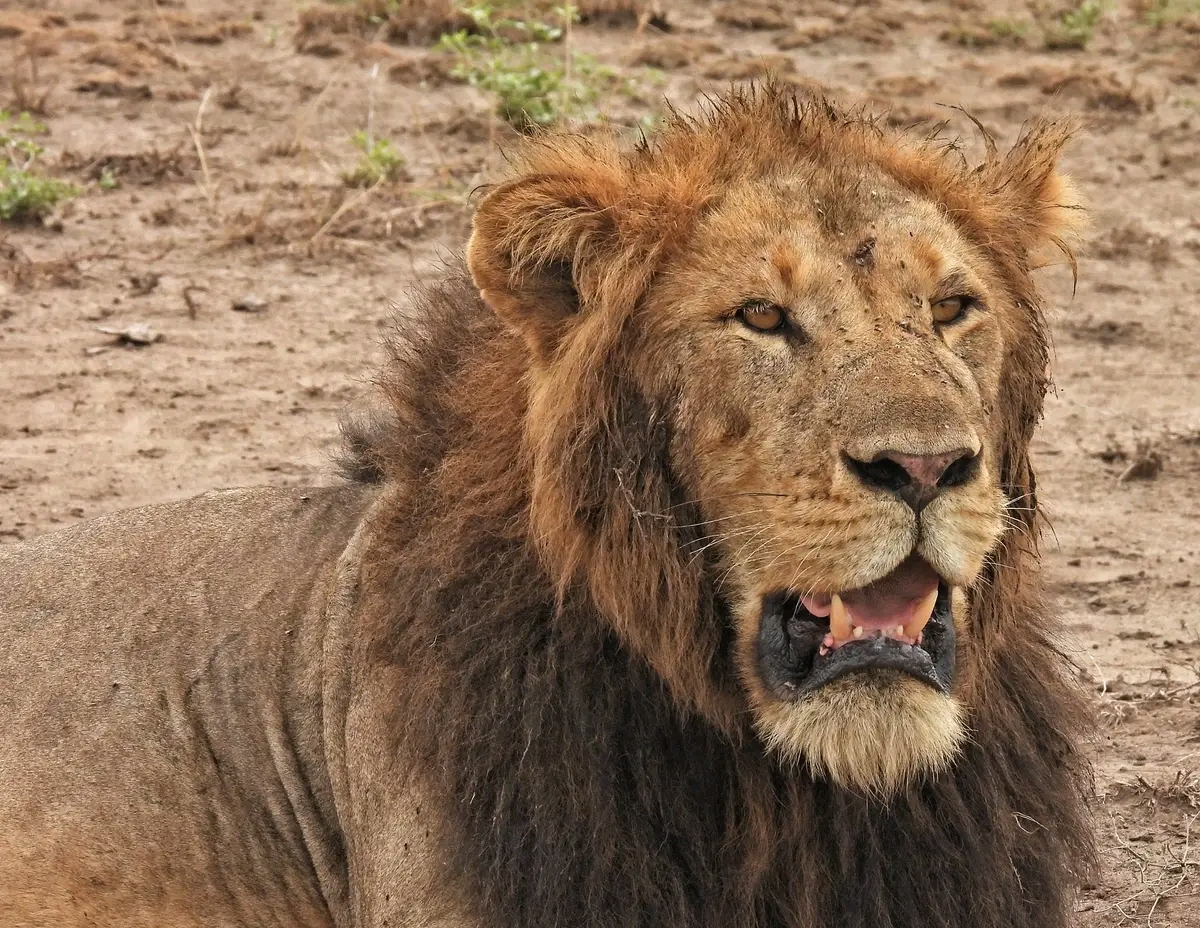Serengeti National Park
Serengeti National Park is a Tanzania Safari destination where you experience millions of Wildebeests Migrating from Serengeti National Park Tanzania to Maasai Mara Reserve in Kenya via the Maasai Mara River. Serengeti National Park with 14,763 sq km is the largest Tanzanian park, contiguous with Kenyan Masai Mara and extending almost to Lake Victoria.
A tour in Tanzania without setting your eyes on the beautiful Serengeti National Park is not a safari worthwhile. The word Serengeti simply means endless plains in the Maasai language. The diversity and beauty of the park will leave you yearning to visit the park as soon as you can. The park is located north of Tanzania and stretches into the south of Kenya with an area of about 1.5 hectares of Savannah grassland.
One of the most spectacular events that take place in the Serengeti, is that there is an annual migration of vast herds of herbivorous animals such as the zebras, wildebeests and gazelles followed by their predators across the Grumeti River. In Addition, the park’s diversity includes several endangered animals such as the black Rhinoceros and many others.
History of Serengeti National Park
The Maasai originally lived and grazed their cattle on the Serengeti lands. Serengeti gets its name from the Maasai word “Siringet,” which means the place where the land runs on forever. The first American to visit the Serengeti was Stewart Edward White who toured northern Serengeti in 1913 and returned in 1920 with his companions whose aims were to hunt lions.
The British administration realized the drastic reduction in the number of lions in the area and they demarcated the land as a conservation unit. In addition, the Maasai were evicted to the Ngorongoro conservation unit in 1959 where they currently live. The park is known as the oldest national park in Tanzania and the flag bearer in the tourism industry of Tanzania.
Species to adventure in Serengeti National Park on your Tanzania Safaris Tour
The park is teaming with stunning wildlife – it is thought that over 3 million large mammals roam the plains in search of fresh grassland. In May or early June, you can witness the annual migration of millions of zebras and wildebeests in search of water and forage as the seasons change.
Large herds of antelopes of all sorts include Patterson’s eland, Klipspringer, Dik-dik, impala, gazelles, water-buck, bush-buck and reed-buck, topis, kongoni, cotton’s oribi, grey bush dicker, roan antelope buffalo and wildebeests (the estimate is above one million of these animals). Carnivores include lions, leopards, cheetahs, hyenas, bat-eared foxes, hunting dogs and jackal. Smaller mammals: spring hare, porcupine, warthog, Hyraxes, baboon, vervet monkey, Colobus monkey, patas monkey, and mongooses. Larger mammals include herds of giraffes, rhinos, elephants, and hippos. There are about 500 species of birds, including vultures, storks, flamingos, martial and fish eagles and ostriches. Reptiles include crocodiles, a number of species of snakes and lizards.
Wildlife living in Serengeti National Park
The Serengeti National Park is famous for its variety of animals as well as birds, which is why it is considered the the best national park in Tanzania.
Animals in the park can be easily spotted and these include large buffalo and Elephant herds, Antelopes, Warthogs, Zebras, magnificent Wildebeests, Giraffes, Hyenas, Lions, Cheetahs, Hippos, Leopards and black Rhinoceros in luck.
The park is also coloured with over 500 bird species. These birds include rufous tailed weaver, Kori bustard, grey-breasted spurfowl, Fischer’s lovebird and so many other beautiful kinds.
Activities to do in Serengeti National Park on your Tanzania Safaris Tour:
Serengeti National Park offers amongst the most exciting game-viewing safaris in Tanzania. You can also do bird-watching tours and Balloon safaris, which normally follow the Grumeti River. One of the main attractions is the annual migration of wildebeest herds during the dry season, from the Serengeti northwards in the Masai Mara, where they remain between July to October. Therefore the concentration of wildlife is greater between December and June.
Game drives
The park gives its guests the opportunity to go on game drives twice a day, at the break of dawn and in the evening. On this ride, you will be able to spot Elephants, Buffaloes, Wildebeests, Warthogs, Zebras, Antelopes, Lions, Hyenas, Leopards, Cheetahs and many more animals as well as beautiful birds.
The wildebeest migration
This migration takes place once every year and several people from all over the world come with the hope of experiencing this beautiful site. This activity is mind-blowing and mouth-gaping because the sight of such large animals causing great waves and splashes in the Water as they move in search of greener pastures is worth the visit.
Masai Mara people
The Maasai Mara people are the indigenous group living within the Serengeti National Park. These people have lived in this park for over 200 years and carry out several exciting rituals and customs. Visiting this group of people will be an interesting adventure for history and cultural lovers.
Olduvai Gorge
This is another fascinating attraction within the borders of the Serengeti National Park. This is the site where archaeologist Dr. Louis Leaky dug up the remains of the first early man from about a million years ago. This site represents the history of man and a fascinating place to visit while at the Serengeti.
Moru Kopjes
This is a rocky area with a variety of shades where the black rhino can easily be spotted and a habitat for several predators. This is therefore an exciting place to visit.
Retina Hippo pool
This is a water body famously known for large pods of hippos as you can tell from its name. At this site, you will be able to see a variety of hippos, fighting and swimming in the water
Grumeti River
This is a water body infested by crocodiles within the water and along the shores. It is amusing to watch several animals such as the wildebeests and zebras putting their lives at risk by crossing the waters with predators in the water waiting to devour them. Sometimes the river can also be a calm and scenic sight.
Seronera river valley
This area is an extremely beautiful site with rivers flowing, grasslands, gorges and plains as well as animals grazing within the park. The valley is a summary of the unique fauna and flora within the park
Hot air balloon safari over the Serengeti
This gives you an opportunity to see the beautiful landscape from a bird’s eye view. The hot air balloon will give you a view of the entire Serengeti at the break of dawn with all its exciting reliefs and animals.
Accommodation in the park
While at the magnificent and beautiful Serengeti National Park, your comfort, relaxation and enjoyment will be taken care of at the following lodges; Serengeti Sopa Lodge, Soroi Serengeti Camp, Serians Serengeti Camp, Seronera Wildlife Lodge, Serengeti Mawe tented camp, Serengeti heritage tented camp, Serengeti Halisi camp, Singita Mara river camp, Robanda tented camp, Mapito tented camp, Lobo wildlife lodge and Lake Masek tented camp.
How to get there
The most convenient means of travel to the Serengeti is a flight to Kilimanjaro airport which is 29 miles from Arusha and then take a small chartered plane to Serengeti or an 8-hour road trip to Serengeti National Park.
In conclusion, you cannot tour Africa without visiting Serengeti National Park because it harbours almost all the animals that you will find in other African parks.


